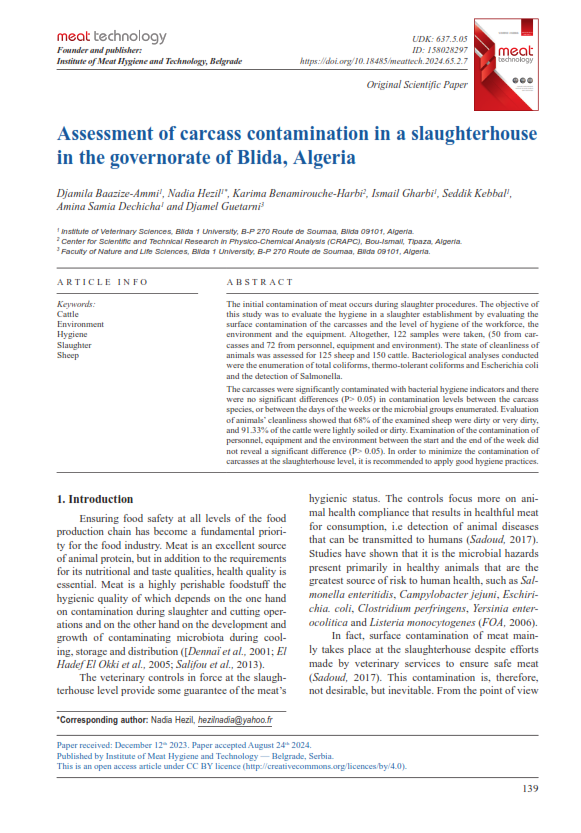Assessment of carcass contamination in a slaughterhouse in the governorate of Blida, Algeria
Abstract
The initial contamination of meat occurs during slaughter procedures. The objective of this study was to evaluate the hygiene in a slaughter establishment by evaluating the surface contamination of the carcasses and the level of hygiene of the workforce, the environment and the equipment. Altogether, 122 samples were taken, (50 from carcasses and 72 from personnel, equipment and environment). The state of cleanliness of animals was assessed for 125 sheep and 150 cattle. Bacteriological analyses conducted were the enumeration of total coliforms, thermo-tolerant coliforms and Escherichia coli and the detection of Salmonella.
The carcasses were significantly contaminated with bacterial hygiene indicators and there were no significant differences (P> 0.05) in contamination levels between the carcass species, or between the days of the weeks or the microbial groups enumerated. Evaluation of animals’ cleanliness showed that 68% of the examined sheep were dirty or very dirty, and 91.33% of the cattle were lightly soiled or dirty. Examination of the contamination of personnel, equipment and the environment between the start and the end of the week did not reveal a significant difference (P> 0.05). In order to minimize the contamination of carcasses at the slaughterhouse level, it is recommended to apply good hygiene practices.





